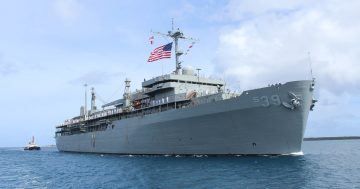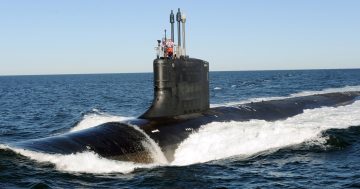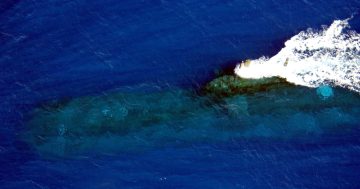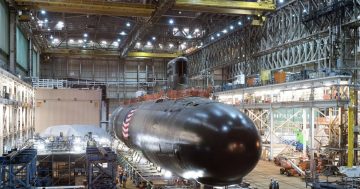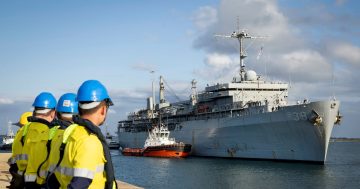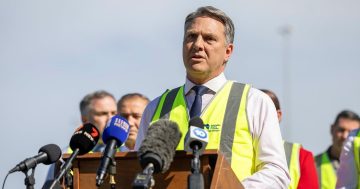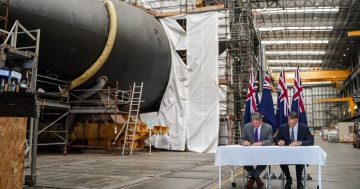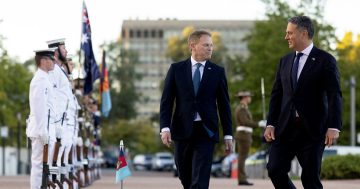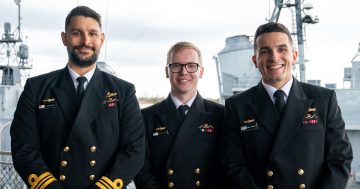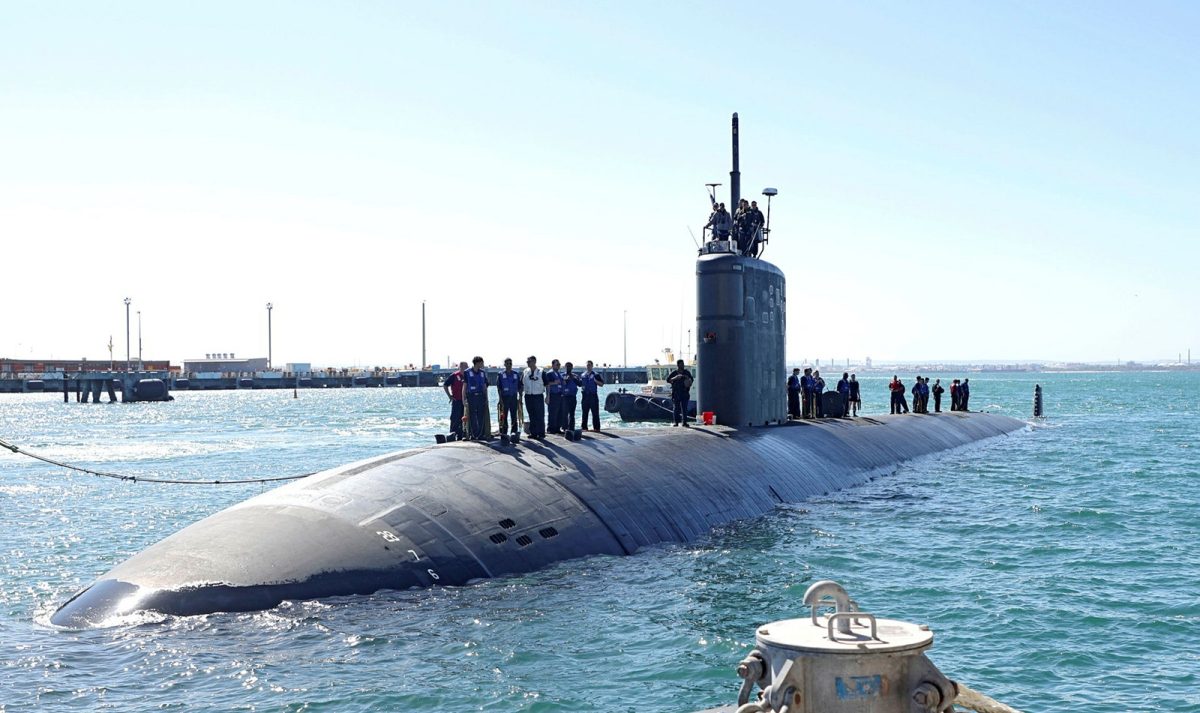
The Lo Angeles class SSN USS Annapolis docks at HMAS Stirling in WA in early March. Photo: ADF.
Australia’s ambitions to operate nuclear-powered attack submarines (SSN) by the early 2030s through the AUKUS Pillar One construct might be at risk as issues with the US shipbuilding industrial base continue.
The US Navy’s FY 2025 budget request has asked for just one new Virginia class Block IV SSN to be funded next year. This is well short of the current build rate of 1.3 boats a year, half that of its stated goal of two submarines a year by 2028, and even further away from the 2.33 boats a year required for the US Navy to release three to five Virginias to the Royal Australian Navy (RAN) from 2032.
Instead, the budget request has called for additional investment in the submarine industrial base decimated during the pandemic and still struggling to recover.
“We believe the best choice for where we are in the Virginia-class program is to make substantial investments in the submarine industrial base to make sure we get these programs on the cadence we need,” Navy Under Secretary Erik Raven told media last Friday.
A significant element of the US$8.8 billion (A$13.2bn) investment in the submarine industrial base the US Navy is seeking is likely to include the US$3bn (A$4.53bn) Australia has promised to contribute under AUKUS Pillar One.
Australia’s investment was designed to increase the US’s industrial capacity so Australia could acquire three to five Virginia class boats from 2032 without adversely affecting the US Navy’s own fleet plans.
US Democratic Congressman and AUKUS advocate Joe Courtney said the proposed budget “demands the highest scrutiny by the Congress”, and described the cut as having the potential to profoundly impact the AUKUS schedule.
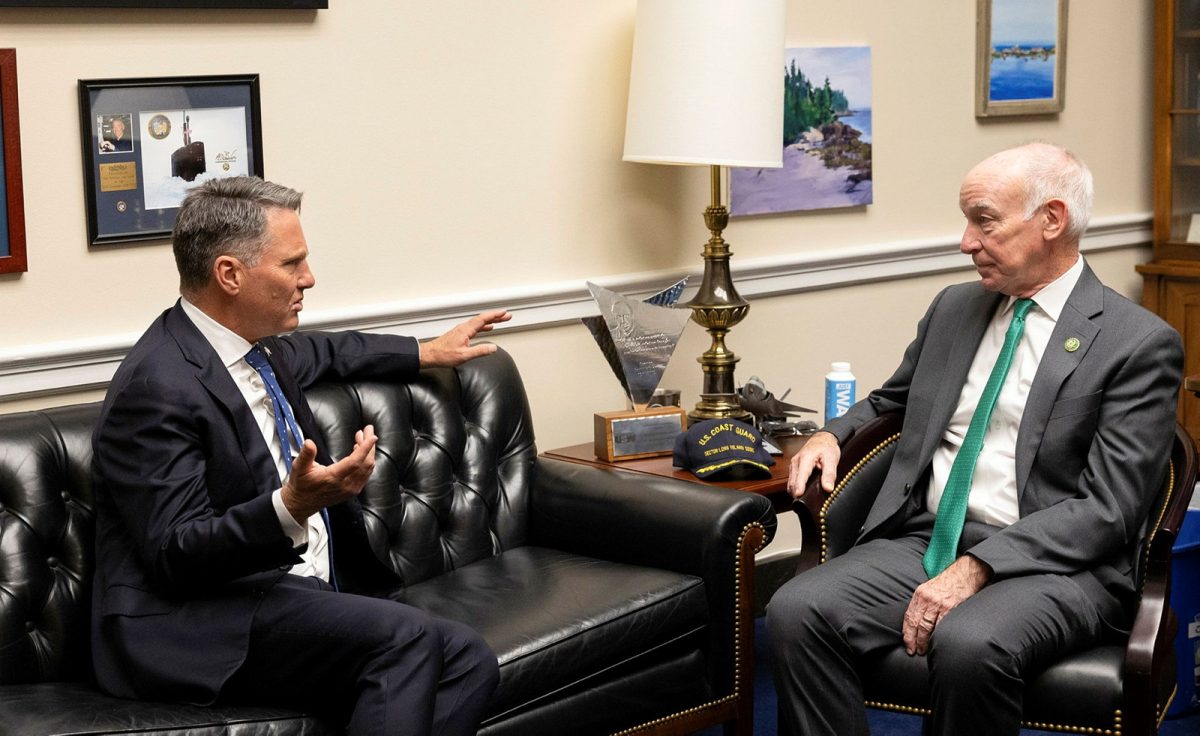
US Congressman Joe Courtney (right), meeting with Defence Minister Richard Marles in November 2023, is a fierce advocate for the AUKUS Pillar One construct. Photo: ADF.
“Given the new commitment the Department of Defense and Congress made last year to sell three submarines to our ally Australia, which I enthusiastically support, the ramifications of the navy’s proposal will have a profound impact on both countries’ navies,” he said.
But the US Navy is more optimistic, saying that while it isn’t currently building boats as fast as it likes, a long-range shipbuilding plan currently underway suggests it will still be possible to meet future demands.
“Taken as a whole, this budget presents a significant investment in the undersea capability area, and we feel like these are absolutely the needed moves to make sure we’re set up for the long term, for success in both Virginia and the Columbia (US Navy ballistic missile submarine) program,” Under Secretary Raven said.
The US Navy currently operates a fleet of 50 SSNs – a mix of mainly Virginia class and some older Los Angeles class boats – but has a goal to increase that to 66 boats. But at the current build rate and with planned retirements of Los Angeles boats and delayed maintenance of earlier Virginia class boats, these numbers may drop to as few as 46 boats by 2030.
The US’s budget issues come almost a year to the day after Australia, the UK and the US announced details of the two-pillared AUKUS dockside at the US Navy’s Point Loma naval base in San Diego. While much has already been achieved in terms of future Australian crew and industry training and development, the US industrial base’s woes remain a concern.
“The US submarine industrial base is a risk, but it is not the sole consideration,” former naval officer, adjunct fellow in naval studies at UNSW Canberra and ANU National Security College expert Jennifer Parker wrote in a report for the Australian Security Policy Institute (ASPI) Strategist on 12 March.
“Putting US domestic issues aside, there’s much to like about what the AUKUS optimal submarine pathway has achieved in its first year.”
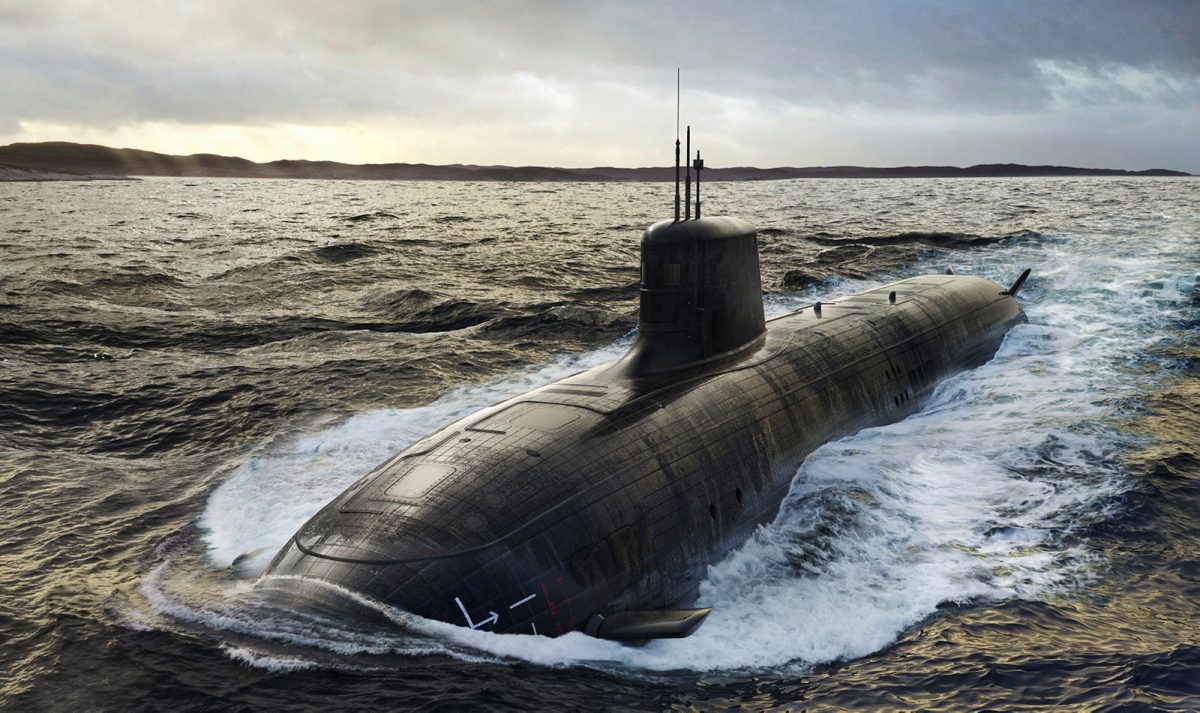
Concept art of the next-generation SSN AUKUS submarine which Australia will buy from the early 2040s. Image: ADF.
Ms Parker highlighted the willingness of Singapore to host Australian SSN port visits at the recent ASEAN gathering, the detailed planning of the optimal pathway that took just 18 months from the initial announcement, and the establishment of the submarine rotation force West (SRF-W) which will host US and UK submarines in WA from 2027.
The RAN has also graduated its first two students from the US Navy’s prestigious Nuclear Power School and follow-on Nuclear Power Training Unit, and legislation for the transfer of US nuclear technology to Australia has been passed into US law.
Additionally, Australian industry personnel have begun work at Pearl Harbor Navy Shipyard in the US and at Barrow-in-Furness shipyard in the UK, and a cadre of 37 RAN personnel have deployed to Guam to work on a US Navy submarine tender in preparation for planned maintenance of a US Navy Virginia class submarine in WA later this year.
Deputy Prime Minister and Defence Minister Richard Marles said the fact the US industrial base is stretched was “not news”.
“It formed part of the landscape against which this arrangement was agreed a year ago,” he told ABC radio on Wednesday.
“The fact that the industrial base is tight this year is something we already understood. And so, we welcome the fact we are seeing an increased commitment of funding over the next five years.
“The US government has been meeting its commitments and continues to do so. There is absolutely a rock-solid commitment to Australia.”
Original Article published by Andrew McLaughlin on Riotact.


